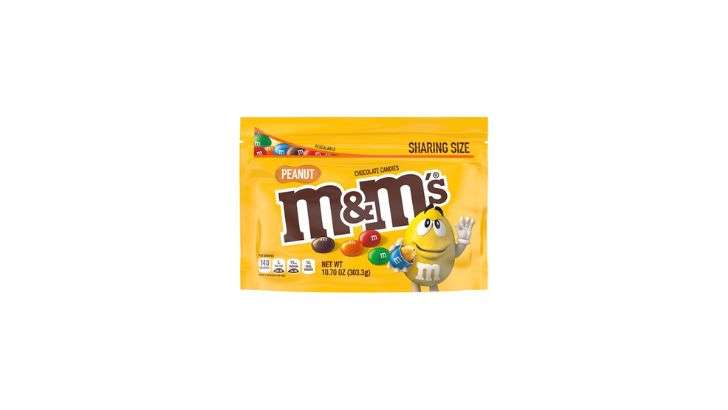No, Peanut M&M’s are considered Haram due to the presence of E120, also known as Carmine. This coloring agent, derived from insects, is not permissible according to Islamic dietary laws. Consequently, Peanut M&Ms are not suitable for Muslims.
Peanut M&Ms are a delightful treat savored by many around the world. But for the Muslim community, the question of whether they are permissible (Halal) is of significant importance. What makes food Halal or Haram? The ingredients play a vital role. So, let’s dive into the world of Peanut M&Ms and understand what they’re made of.
What Are Peanut M&Ms?
Peanut M&Ms, a variant of the classic M&Ms, are colorful, button-shaped candies with a whole peanut encased in milk chocolate, which is then enclosed in a crunchy, candy shell. A product of the Mars Company, these candies have been tantalizing taste buds since their introduction. Their vibrant colors and crunchy texture combined with the rich taste of chocolate and the nutty flavor of peanuts make them a favorite for many. They are usually sold in distinct packaging, often recognizable by the character “Yellow,” the M&M’s mascot associated with this variant.
While Peanut M&Ms have been a beloved snack for decades, it’s essential to consider the ingredients that make up this candy. Every ingredient serves a purpose – from giving the candy its flavor, texture, or even its vibrant colors.
The process of creating Peanut M&Ms is intriguing. The peanuts are roasted and coated with a layer of chocolate. This chocolate-coated peanut then gets its colorful shell through a tumbling process where multiple layers of sugar and coloring agents are added. The result is a bite-sized candy that offers a delightful crunch followed by the melty goodness of chocolate and the wholesomeness of peanuts.
Peanut M&M’s Common Used Ingredients List:
- Milk Chocolate: A sweet combination of sugar, cocoa, and milk. It forms the core flavor of the M&M.
- Sugar: Adds sweetness to the chocolate.
- Peanuts: The heart of Peanut M&M’s, offering a nutty flavor and crunchy texture.
- Cornstarch & Corn Syrup: Used as thickening agents and to add sweetness.
- Palm Oil: Acts as a stabilizer and provides a smooth texture.
- Dextrin: A carbohydrate added for texture.
- Coloring Agents (like Red 40, Yellow 5, Blue 1, etc.): These give M&Ms their vibrant colors.
- Carnauba Wax: Used for a shiny finish.
- Gum Acacia: Acts as a stabilizer.
Are Peanut M&M’s Halal?
As we’ve seen, the primary concern for many Muslims is the presence of E120, or Carmine. Derived from the crushed cochineal insect, Carmine is used as a coloring agent in various food products, including some variants of M&Ms. Islamic dietary laws, based on the teachings of the Quran, state that any food product containing ingredients derived from impermissible sources, like certain insects, are considered Haram, or forbidden.
This raises a significant concern. Many might think, “It’s just a coloring agent, does it matter?” In the realm of Halal and Haram, every ingredient matters. The consumption of food is not only a physical act but a spiritual one for Muslims. It’s an act of worship, ensuring that what they consume aligns with their religious beliefs.
Furthermore, it’s not just about the presence of Carmine. Companies often use different ingredients or change their formulations based on region and availability. Therefore, it’s always a good idea for Muslims to check products’ ingredients and look for Halal certifications when available.
Final Thoughts
Peanut M&M’s, while delightful and popular, pose a challenge for Muslims due to the presence of Carmine as a coloring agent. Food consumption, especially in the Islamic context, goes beyond just satisfying hunger or craving. It’s a reflection of one’s beliefs, a connection to their faith. And while the world is becoming more accommodating and understanding of Halal requirements, it is still upon the individual to ensure what they consume aligns with their beliefs.
It’s also a reminder of the intricate relationship between faith and everyday life. Something as simple as a candy can become a subject of deep reflection and contemplation. As the world becomes more interconnected, and as global brands reach every corner of the earth, companies must be mindful of their consumers’ diverse needs.

